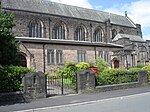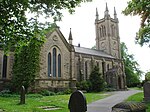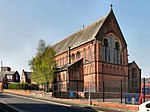Bolton Steam Museum
Buildings and structures in BoltonHistory of BoltonHistory of transport in Greater ManchesterIndustrial archaeological sites in EnglandMuseums in Greater Manchester ... and 4 more
Preserved stationary steam enginesSteam museums in EnglandTourist attractions in the Metropolitan Borough of BoltonUse British English from December 2016

Bolton Steam Museum is a museum in Bolton, Greater Manchester, England, which houses a variety of preserved steam engines. Based in the cotton store of the former Atlas Mill in Mornington Road, it is owned and run by the Northern Mill Engine Society (NMES).
Excerpt from the Wikipedia article Bolton Steam Museum (License: CC BY-SA 3.0, Authors, Images).Bolton Steam Museum
Musgrave Road,
Geographical coordinates (GPS) Address Website External links Nearby Places Show on map
Geographical coordinates (GPS)
| Latitude | Longitude |
|---|---|
| N 53.5849 ° | E -2.4546 ° |
Address
The Bolton Steam Museum
Musgrave Road
BL1 4HN , Heaton
England, United Kingdom
Open on Google Maps






